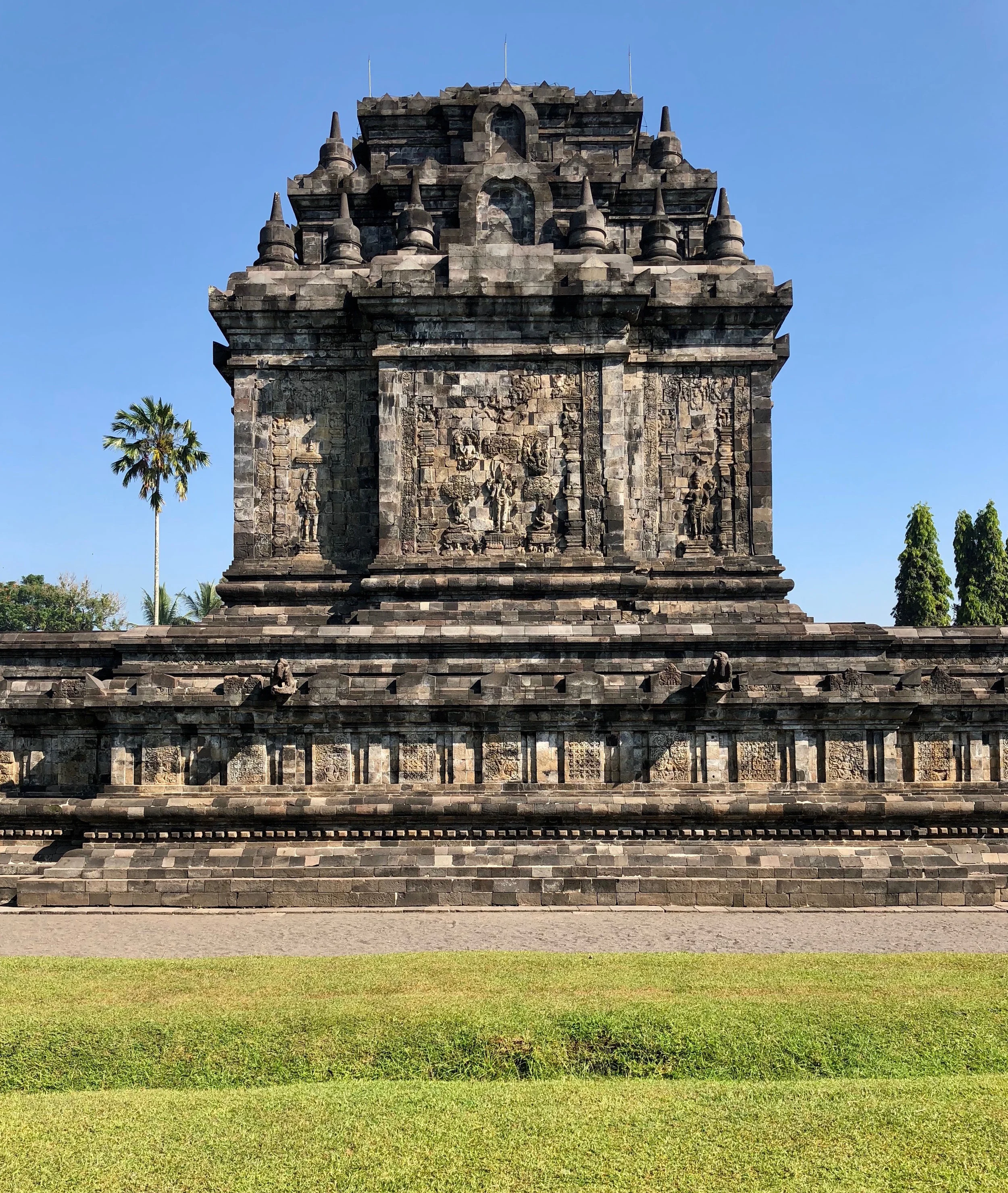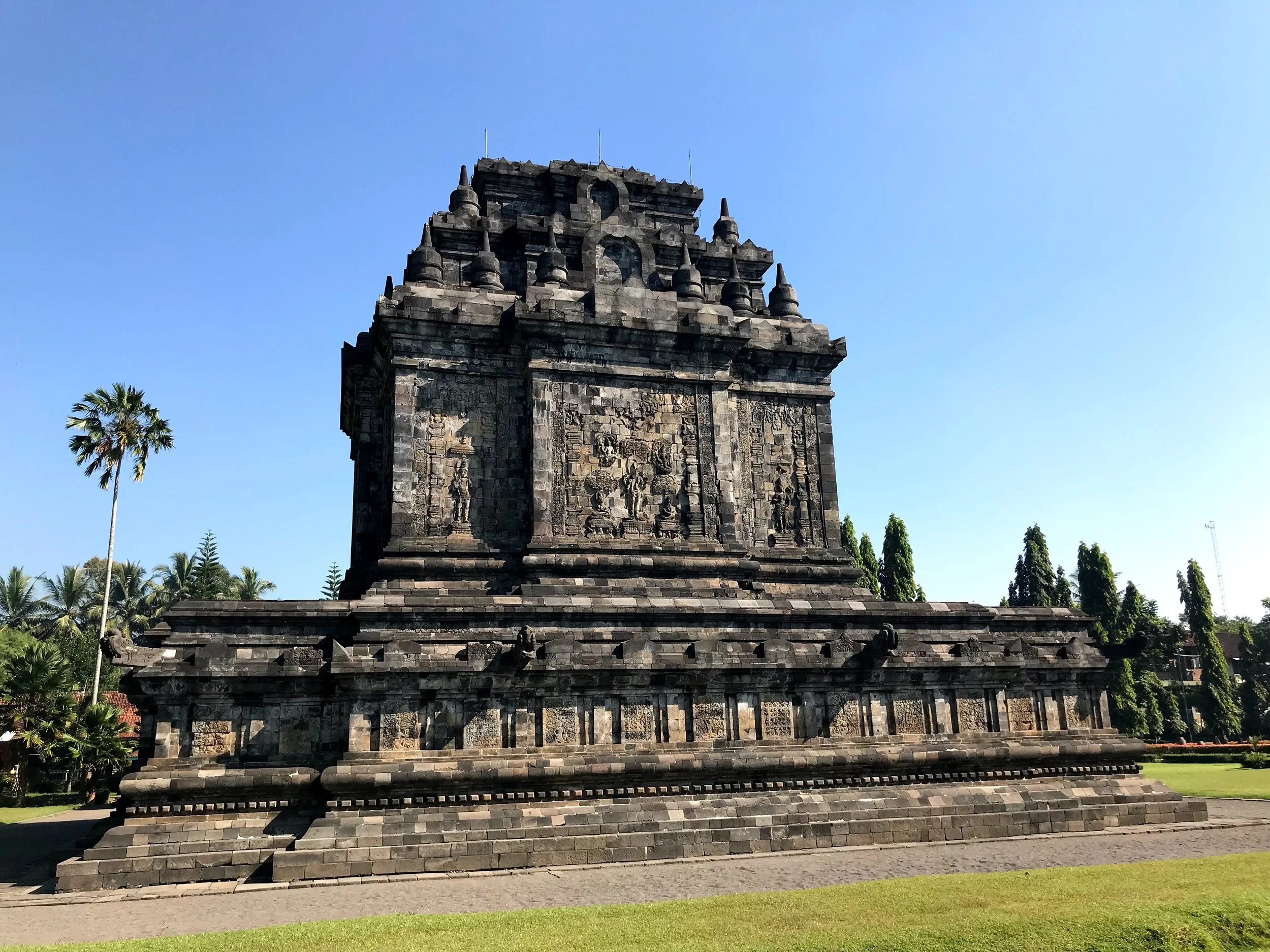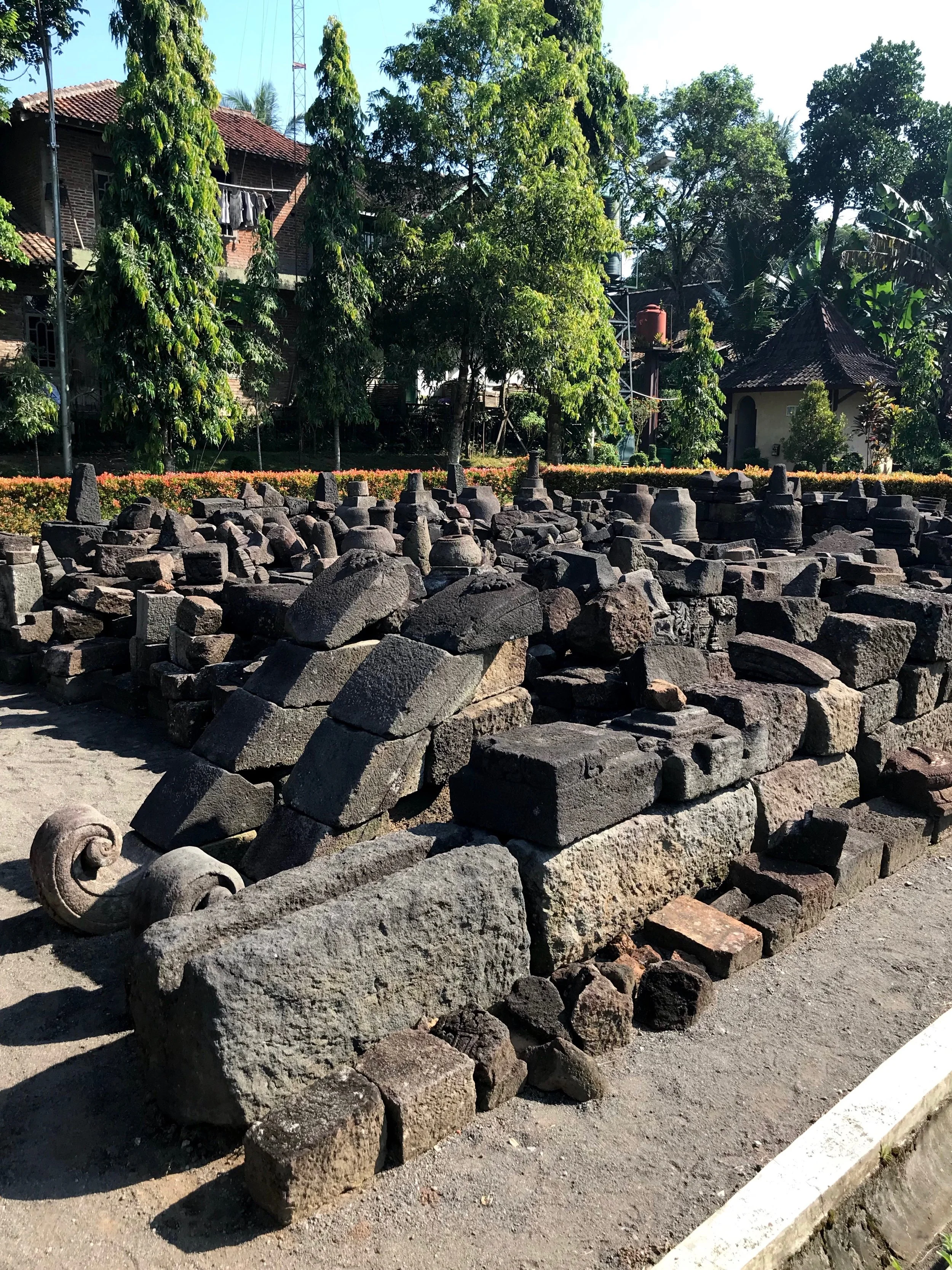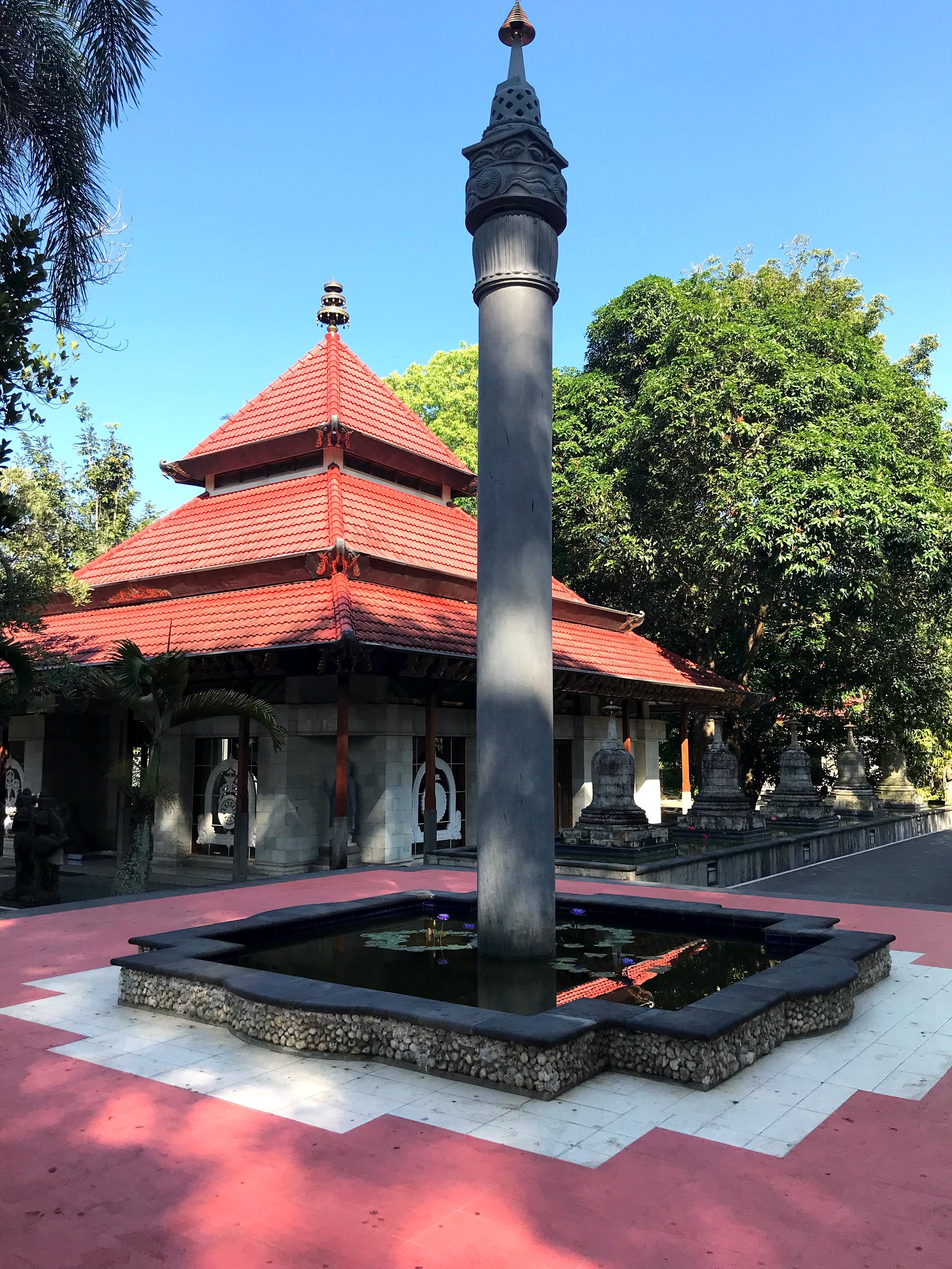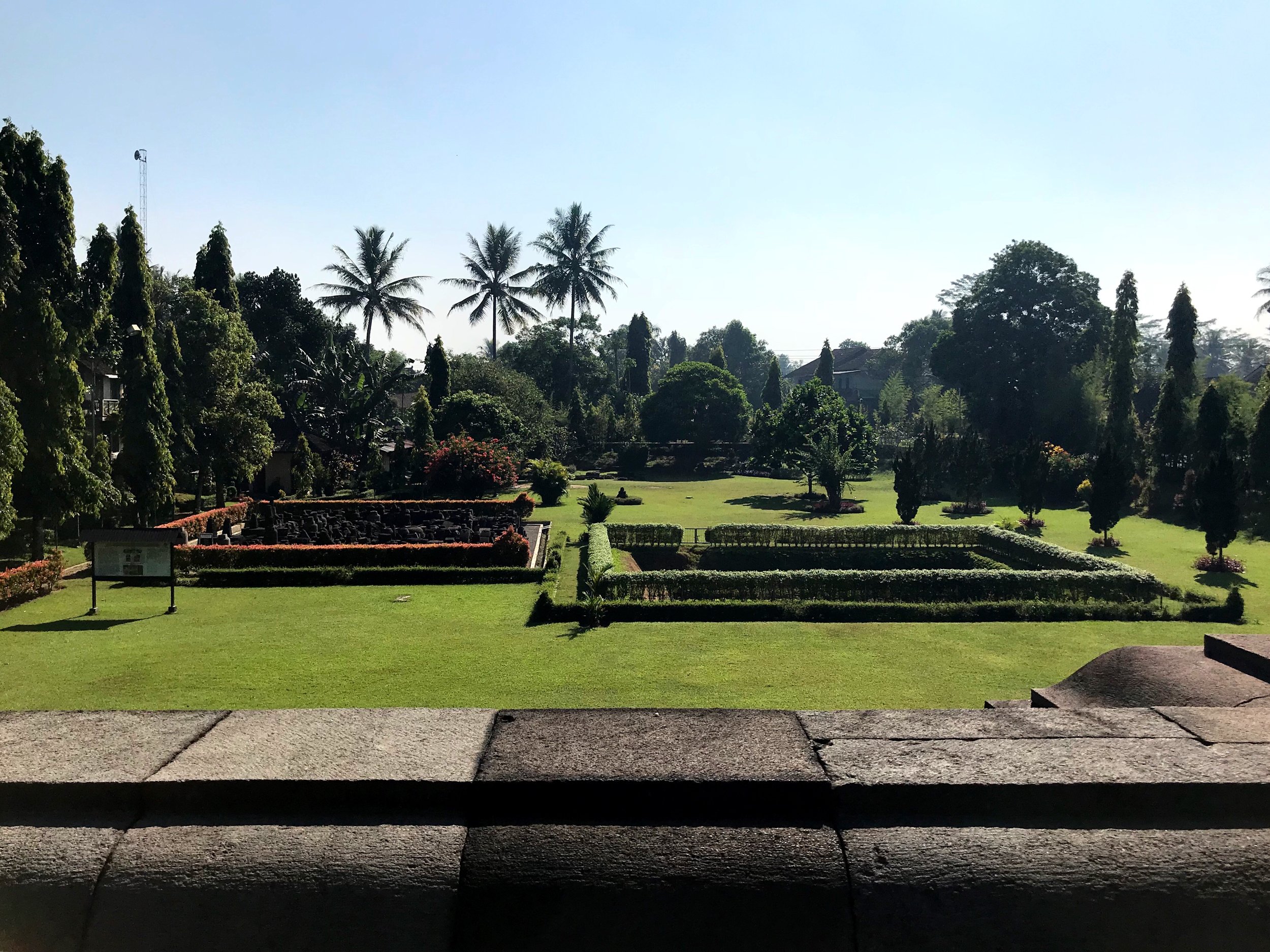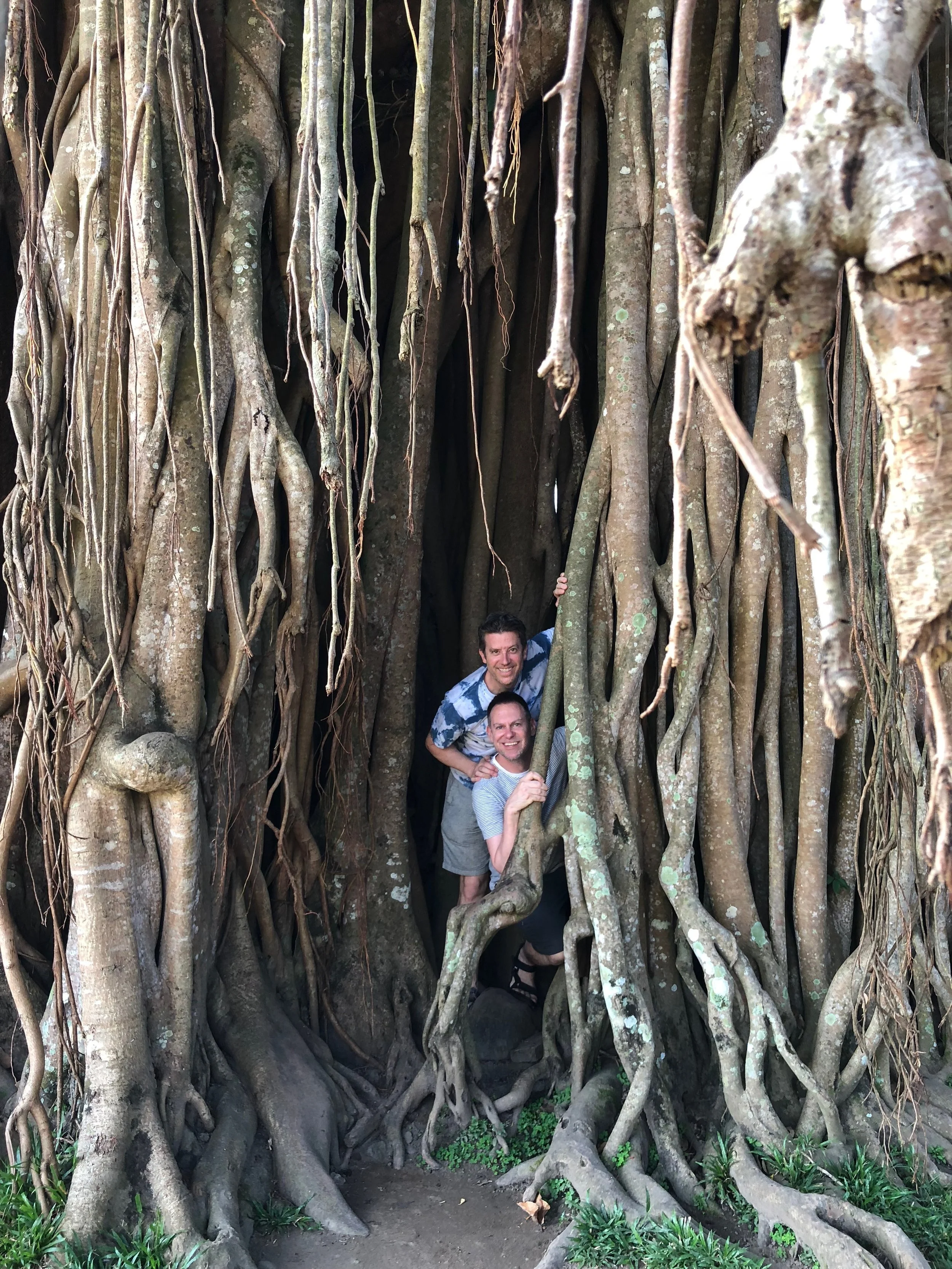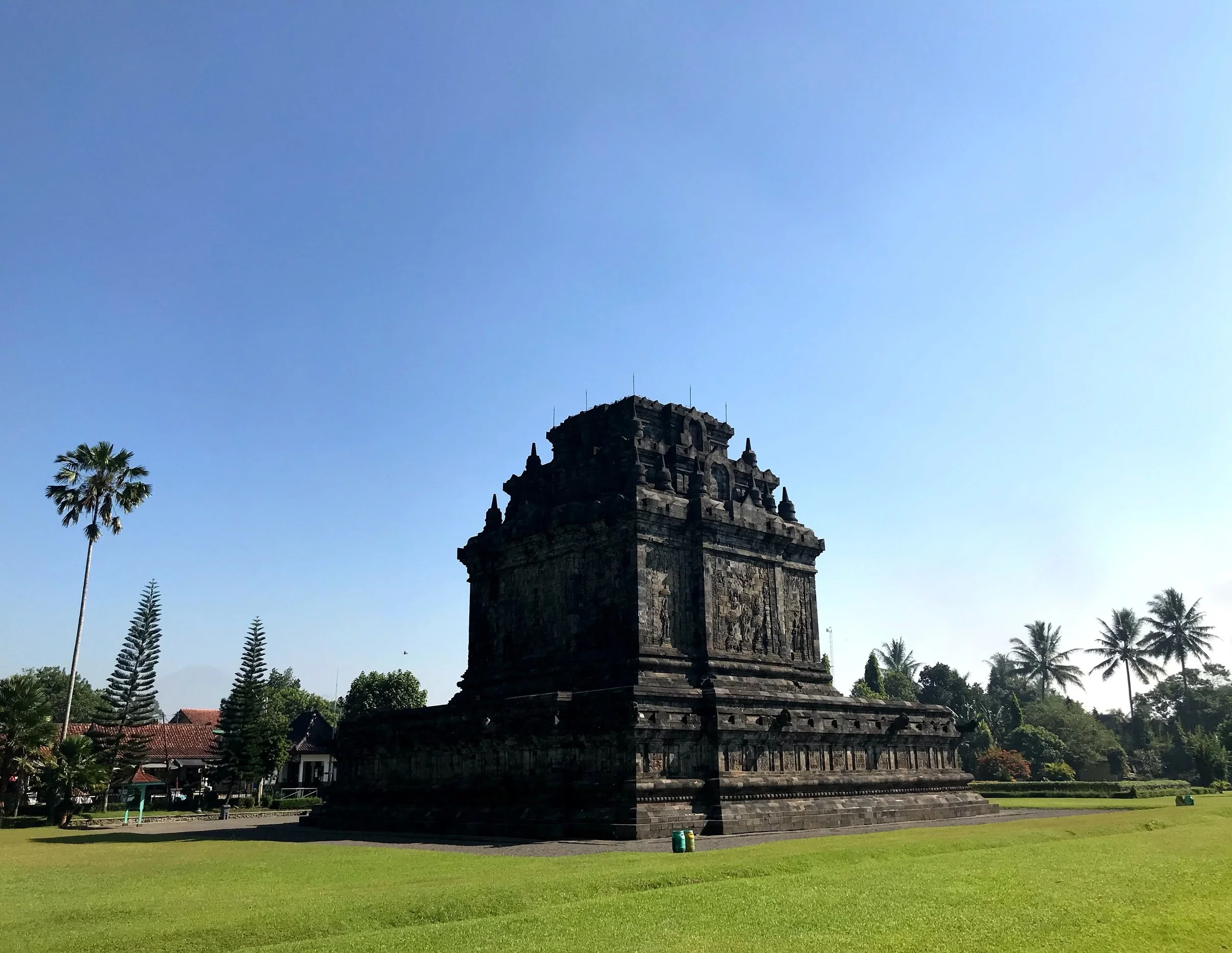Explore this ancient Buddhist temple and go for a swing on the massive banyan out back.
It may be small, but it’s an exquisite ancient temple. Located a short distance from Borobudur, the largest Buddhist shrine in the world, Candi Mendut was the third and final stop on our day’s itinerary. The clear blue sky was a stunning backdrop for the structure, composed of gray andesite volcanic rock.
We also visited the small (and rather unimpressive) Candi Pawon, where Wally and I bought a replica of the bell-shaped stupas that line Borobudur, carved of the same stone as the temple.
“The southern façade of Mendut has a bas-relief of Hariti, patroness of motherhood, who was once a child-eating ogress.”
The Dutch discovered this sacred structure by chance in 1836, while cutting through thick foliage to clear the plot for a coffee plantation. After careful inspection, overseen by colonial engineering officer Theodore Van Erp, the ruins were eventually uncovered. Conservation efforts began in 1897 but weren’t completed until 1925.
Candi is the word for a Hindu or Buddhist temple or shrine in Bahasa, the Indonesian language. The lone structure stands atop a stone plinth and shares a peaceful green clearing with an enormous sacred banyan tree. A remnant of the Sailendra dynasty, the temple is believed to have been built sometime around 824 CE, during the reign of King Indra.
Its roof is a succession of staggered tiers, decreasing in size, with the first and second encircled by votive stupika, small dome-shaped shrines. At the summit, the central stupa is absent, most likely due to the passage of time or, perhaps damage caused by earthquakes.
Parts of the temple have been excavated but not rebuilt, as they’re missing pieces
Off to the side of Mendut, a field of sculptures and fragments are laid out in the order they would fit had the missing pieces been found.
Candi Mendut is one of three temples connected along a nearly direct line, leading historians to speculate that it was part of a grand design and most likely an important pilgrimage stop en route to Borobudur. Of the three, Mendut is the oldest, having been built about 10 years before Borobudur.
On the west side, a staircase leads up to a broad terrace, designed for circumambulating or ritualistically walking clockwise around the temple. Wally and I climbed the worn stone steps, flanked by a pair of makara, mythological Buddhist sea creatures, each with lion standing within its gaping mouth. Narrative scenes from the Jataka tales, which tell of the Buddha’s previous incarnations as both humans and animals, are carved into the balustrade.
I know it doesn’t seem like a big deal, but it’s very unusual that the Buddha’s feet are both touching the ground
After we passed through the structure’s single entrance into the inner sanctuary chamber, we were greeted by three remarkably well-preserved figures. The formidable central figure is the Buddha Vairocana, depicted in a seated position, atypical for having both feet touching the ground. His hands are in Dharmachakra mudra, a gesture used by Buddha during his first sermon after enlightenment, representing the continuous flow of energy.
Inside the small temple is a statue of Buddha and two bohisattvas, including Vajrapani, a protector and guide
On either side sit two bodhisattvas, compassionate individuals who postpone nirvana to teach others enlightenment. To the left is Avalokitesvara, the One Who Hears the Cries of the World, who represents compassion and liberates devotees from the destructive power of speech. To the right is Vajrapani, the protector and guide of the Buddha, symbolizing the energy of the enlightened mind, his right leg folded and right hand raised.
Standing in the chamber among the ancient sentinels, I could almost feel the presence of the invisible dead. Make sure to look closely at the feet, which are black from being touched by devotees.
You’ll pass Mendut Monastery en route to the temple
Apparently, the monastery is open to visitors, though the gates were closed when we passed by
Looking out at the temple grounds from Mendut’s raised platform
The Legend of Hariti: From Ogress to Protectress
The southern façade of Mendut has a bas-relief of Hariti, who, according to myth, was once a child-eating ogress. To feed herself and her 500 children, she took to cannibalism, snatching kids from the village of Rajagriha. This led to great fear among locals, who came to the Buddha and pleaded with him to save their children.
In one variation of the tale, the Buddha waited for Hariti to leave her dwelling and kidnapped her youngest and most beloved son, hiding him beneath his begging bowl. Upon her return home, Hariti found her son missing and searched for him in vain. Grief-stricken, the ogress in turn sought the Buddha’s aid in finding him.
The Buddha agreed to help, providing she give up her wicked ways. He explained how she was causing great suffering to the villagers. Hariti agreed to abstain from cannibalism and promised to consume only pomegranates from then on. The Buddha returned her son and ordained her the protector of children.
This statue is of particular importance to childless Javanese couples, who pray to Hariti as a symbol of fertility and patroness of motherhood.
You can see the banyan behind the temple, though its immense size is still hard to grasp
The Sacred Banyan Tree
Like the witch Rangda’s mane of unkempt hair, multiple root streamers descend from the banyan behind the temple. After some minor coaxing from our driver, Wally was swinging from one. Our photos can't begin to relay the enormity of the banyan. It was the second-largest tree I’ve ever seen, the first being the ancient banyan at Pura Kehen on Bali.
Banyan roots grow down from branches and become as solid as trunks, forming a cave of sorts
The staff at our resort later told us that our driver had been sharing this photo of Wally swinging on the sacred banyan roots
Mendut may be less well-known and unassuming than Borobudur, but it has some beautiful bas-reliefs and stone carvings. If you are planning on visiting Borobudur, you should definitely add Candi Mendut to your visit. It’s worth walking around the complex to take in its peaceful atmosphere — and have a swing on the banyan out back. –Duke
Pair Candi Mendut with a trip to Borobudur
Mendut Temple
Jalan Magelang Sumberrejo
Mendut
Mungkid
Magelang
Jawa Tengah 56501
Indonesia
